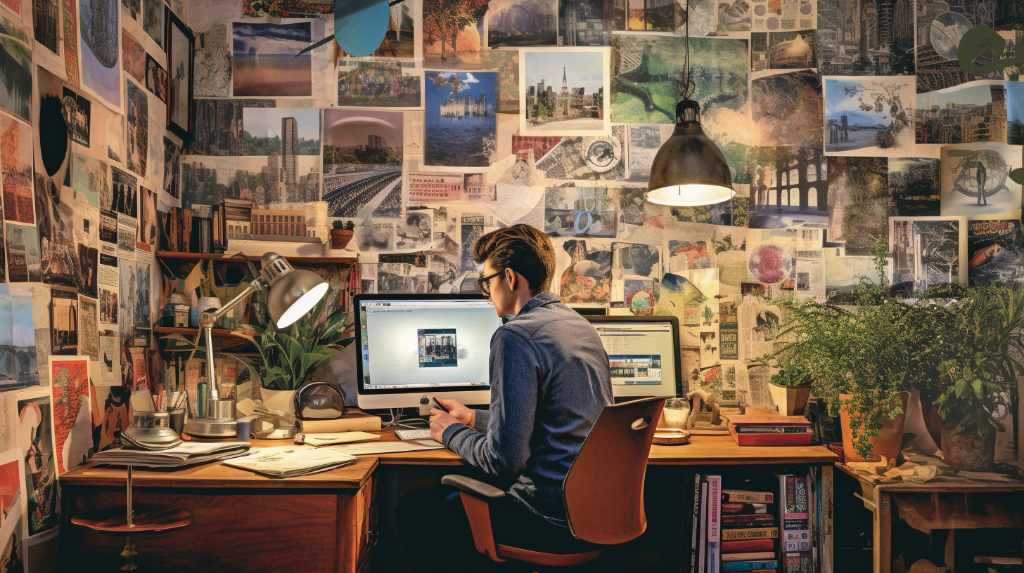Useful Tips for Aspiring Freelance Designers

In recent years, the freelance design industry has seen substantial growth thanks to technology advances and the increasing demand for creative services. Choosing to become a freelance designer can be an exciting and rewarding career path. It comes with its own set of challenges, such as finding clients and managing your own business, but it also offers flexibility and the opportunity to express your unique creative vision.
One of the keys to success in this field is understanding the industry and acquiring the necessary skills. So, where should you start? What do you need to know about the freelance design industry, and what skills should you focus on?

Understanding the Freelance Design Industry
The freelance design industry is broad and diverse, offering opportunities that range from digital design to traditional print media. As a freelance designer, you could be creating logos for startups, designing websites for businesses, or producing promotional materials for marketing campaigns. The possibilities are truly endless.
Working in this industry means you’ll be interacting with a wide variety of clients, each with their own unique needs and expectations. Understanding your clients’ needs and being able to deliver high-quality designs that meet those needs will be crucial to your success.
Essential Skills for New Freelance Designers
As a freelance designer, your skills will be your most valuable asset. Of course, having solid graphic design skills is a given. You’ll need to be proficient in design software such as Adobe Illustrator and Photoshop, and have a good understanding of design principles like color theory and typography.
But technical skills alone aren’t enough. You’ll also need to develop soft skills like networking and negotiation. Networking can help you connect with potential clients and other designers who can offer advice and support. Negotiation skills will be important when discussing project details and setting prices with clients.
Finally, marketing yourself and your services is a crucial part of being a freelancer. You’ll need to know how to promote your services effectively, whether that’s through your own website, social media, or other platforms.
Setting Up Your Freelance Business
As an aspiring freelance designer, the first step to launching your career is setting up your business. This involves more than just sharpening your design skills; it requires strategic planning and branding. The process of setting up your freelance design business can be broken down into three core steps: registering your business, setting up a portfolio website, and creating a brand.
Registering as a business gives you legal protection and legitimizes your work. It’s a practical step that can help you in the long run. Meanwhile, setting up a portfolio website is essential in showcasing your work and attracting potential clients. It acts as your digital storefront where people can see your designs and understand the quality of your work.
Building Your Brand
Building a unique brand is a crucial part of setting up your freelance design business. But what does it mean to build a brand? It’s about creating an identity that sets you apart from other designers. It’s about defining your style, your values, and the unique perspective you bring to the table. What makes your work different? Why should clients choose you over others? Answering these questions will help you build a unique and compelling brand.
Your brand should be reflected in everything you do, from your website design to your communication style. It’s a way of showing potential clients who you are and what you stand for. So, take some time to think about your brand and how you want to present yourself to the world.
Establishing Your Portfolio
A compelling portfolio is your best marketing tool as a freelance designer. It’s a chance to showcase your skills, creativity, and versatility. But what makes a portfolio stand out? Here are a few tips:
Firstly, only include your best work. Quality always trumps quantity. Secondly, show a range of work that demonstrates your versatility, but still aligns with your brand. Lastly, provide context for each piece of work. Explain the brief, your approach, and the results. This not only showcases your design skills but also your problem-solving abilities.
Finding and Securing Clients
Once you have your business set up, the next step is to find and secure clients. This can be one of the most challenging aspects of freelancing, but with the right strategies, you can make it work.
There are various ways to find potential clients. You can utilize freelance job platforms, attend networking events, or even cold email potential clients. When reaching out to potential clients, remember to tailor your pitch to their specific needs and show them how your design skills can benefit them.
Securing clients is not just about finding them; it’s also about convincing them to hire you. This is where your portfolio, your brand, and your communication skills come into play. So, be proactive, be professional, and always be ready to showcase your best work.
Pricing Your Work
As a freelance designer, one of the most critical and often most challenging aspects of your job is determining how to price your work. It’s a delicate balance between ensuring you’re adequately compensated for your skills and time, and not overcharging your clients. So, how do you strike the right balance?
One common approach is to charge hourly rates. This method is straightforward and allows you to be compensated for every hour you put into a project. However, it might not fully capture the value you’re providing, especially for more complex projects.
Another strategy is value-based pricing. This involves setting your fees based on the perceived value of your work to the client. For instance, a logo design that’s going to be used by a multinational corporation may be priced higher than one for a local small business.
Finally, you could consider project-based pricing, where you set a fixed price for the entire project. This method provides certainty for both you and your client, but it requires a clear understanding of the project’s scope.
Managing Projects and Deadlines
Once you have your pricing sorted out, the next challenge is effectively managing your projects and deadlines. In the freelance world, time is indeed money. So how can you ensure you’re maximizing your efficiency and meeting your clients’ expectations?
Firstly, it’s important to have a clear project management system in place. This could be as simple as a spreadsheet detailing each project, its deadline, and its current status, or as sophisticated as a dedicated project management software.
Secondly, prioritization is key. Not all projects are created equal – some will be more urgent, or more important, or more lucrative than others. Knowing how to prioritize your work effectively can make a huge difference in your productivity.
Lastly, don’t underestimate the importance of communication. Keeping your clients informed about your progress and any potential issues can prevent misunderstandings and build trust.
Remember, as a freelancer, you’re not just a designer – you’re also a project manager, and learning to juggle these roles effectively is crucial to your success.

Continual Learning and Improvement
Are you aware that the design industry is ever-evolving? As a freelance designer, it is crucial to keep up with the latest trends and continually improve your skills. This not only helps you stay relevant and competitive in the market, but it also offers a chance to explore new design styles and techniques.
Online tutorials, webinars, and workshops can be excellent resources for learning and growth. Additionally, subscribing to design blogs or magazines can help you stay updated on the latest industry news and trends. Remember, the more you learn, the more versatile you become as a designer.
Coping with the Challenges of Freelancing
Freelancing offers a lot of freedom and flexibility, but it’s not without its challenges. Ever felt isolated working from home or struggled with fluctuating income? You’re not alone. These are common issues many freelancers face.
Isolation can be tackled by networking with other freelancers or joining local co-working spaces. As for irregular income, it’s essential to have a financial buffer for lean periods and to diversify your client base to ensure a steady stream of projects.
Another challenge can be dealing with feedback criticism. Remember, criticism is not a reflection of you as a person, but rather a part of the creative process. Learn to accept it constructively to improve your work and grow as a designer.
Building Long-term Success
So, how can you build long-term success as a freelance designer? It requires more than just great design skills.
Fostering strong relationships with clients is key. Delivering quality work on time, communicating effectively, and going the extra mile can help you win repeat business and referrals.
Maintaining a high-quality portfolio is another important factor. Your portfolio is often the first impression potential clients have of you, so keep it updated with your best work.
Lastly, remember the importance of continual learning and adaptation. The design industry is dynamic and constantly changing, so stay curious and open to new ideas. This will not only enhance your skills but also keep your work fresh and exciting.
Freelancing isn’t always easy, but with perseverance, adaptability, and a commitment to ongoing learning, it can be a fulfilling and rewarding career choice. Ready to take on the world of freelance design?
Get Organized & Win More Clients
Kosmo has everything you need to run your freelancing business.